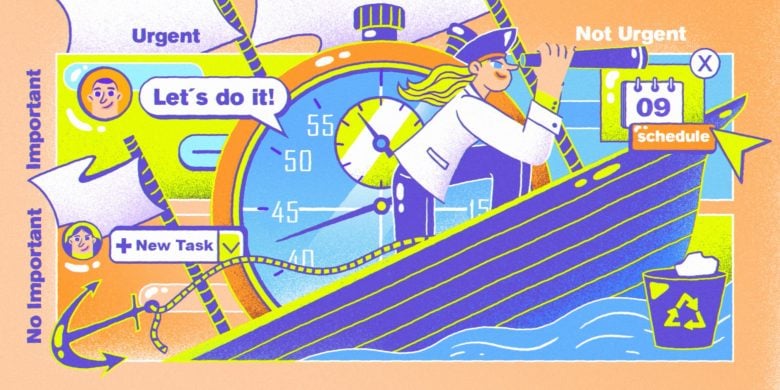“Productivity theater” is a significant concern for managers, especially those new to leading remote teams. Productivity theater happens when workers engage in unproductive activities to prove to managers and leaders that they are engaging in work, even if this busy work has nothing to do with actual productivity or performance.
When managers place too high an emphasis on productivity “vanity metrics” or unrealistic goals without context, team members are forced to respond by acting out roles in productivity theater.
The need to look busy incentives employees to appeal to managers’ perception of what work should look like. This means time is invested in the charade of work rather than the work itself.
It’s true; we all want work to get done to avoid deadlines, late nights, and frustrations, and this productivity theater busy work gets in the way of accomplishing our goals.
So, if you’re a manager: are you causing your team to play parts on the unproductive stage of busy work? Let’s talk about what matters when it comes to keeping the team productive, so that they’re not putting on an act for you or other leaders.
Boost your team’s efficiency with Hubstaff's productivity tools
The data points to the office, not work from home jobs
A new review of workforce data finds that managers still worry significantly about productivity and remote workers’ actions.
They’re afraid that Netflix is too tempting or that errands pull team members away from their desks.
There is, of course, some justification for these concerns. There are certainly times when employees are not working even though they’ve said that they are. But, spending too much time handling a few bad actors can cause you to create policies or workflows that penalize your company’s honest and hard working team members.
Roughly 13% of American remote workers say they’re only working and productive for 3 to 4 hours per day – between 38% and 50% of their day. So, at least half the time they’re on the clock, their motivation meters are running on empty. That doesn’t sound great — does it?
Well, just wait for this statistic. As it turns out, your average office worker is productive for only 2 hours and 33 minutes of their day. That’s just 32% of their day!
See, being stuck in the office doesn’t prevent people from looking at social media, taking extra-long lunch breaks, or playing games on their phones. Often, being in the office only increases activities that look like work. And many of these distractions are social — meaning they take more than one team member away from their work.
Just because a manager is in the building doesn’t mean productivity theater stops. It’s all too easy to blame remote work for a lack of productive work time.
The right way to respond isn’t micromanaging, invading employee privacy, or unfairly announcing RTO (return to office) policies. Instead, get past productivity theater and get to authentic productivity by setting proper employee expectations and engaging your remote employees.
Become a patron of the art of work, not a critic
The data and studies that make for exciting headlines or social media buzz often elicit knee-jerk reactions. Science tells us negative headlines get more clicks, and people think about negative situations much more when making decisions.
And when some famous CEO has a bad take on remote and hybrid work, that news will get all the coverage. Of course, leaders like that never seem to hold themselves responsible for failing to build a company culture with an engaging remote employee experience.
That lack of managerial accountability is why these productivity stories are framed as remote workers being lazy or slacking on the job.
So, when you think your team might have a productivity slump, go and ask. Listen to feedback, solve pain points, or help employees avoid burnout. Use information about work activity or task time to start the conversation about improving the work environment.
Avoid the risk of letting abstract data make your decisions. You shouldn’t let a headline saying remote workers only work 4 hours a day make you start an RTO campaign. You wouldn’t send everyone packing after learning that in-office workers are productive for less than 3 hours a day, would you?
The best response is to communicate with your team when something is amiss. Ensure they have what they need to succeed and recognize that you want people to meet company and project goals, not productivity metrics unrelated to company success.
Most popular
The Critical Role of Employee Monitoring and Workplace Security
Why do we need employee monitoring and workplace security? Companies had to adapt fast when the world shifted to remote work...
15 Ways to Use AI in the Workforce
Whether through AI-powered project management, strategic planning, or simply automating simple admin work, we’ve seen a dramatic...
The AI Productivity Panel: Lessons From Leaders on What’s Working (and What’s Not)
When I moderated this AI productivity panel, I expected a solid conversation. What I didn’t expect was the flood of real-world i...
Employee Performance Dashboards: Templates, Tools, and Best Practices
Keeping track of how your team’s really doing can be tricky. Spreadsheets pile up, one-on-ones only tell part of the story, and...




